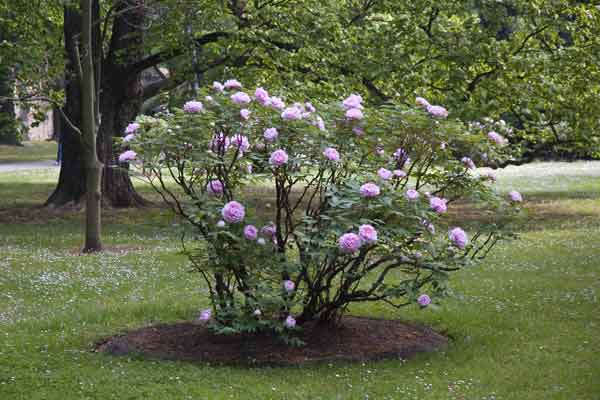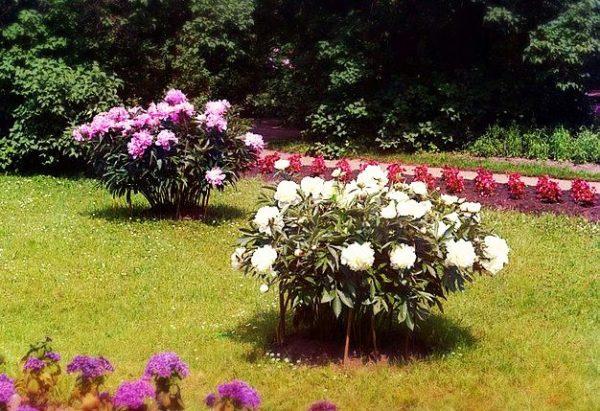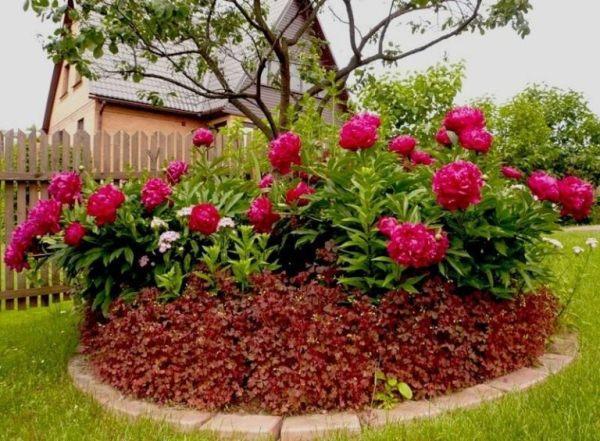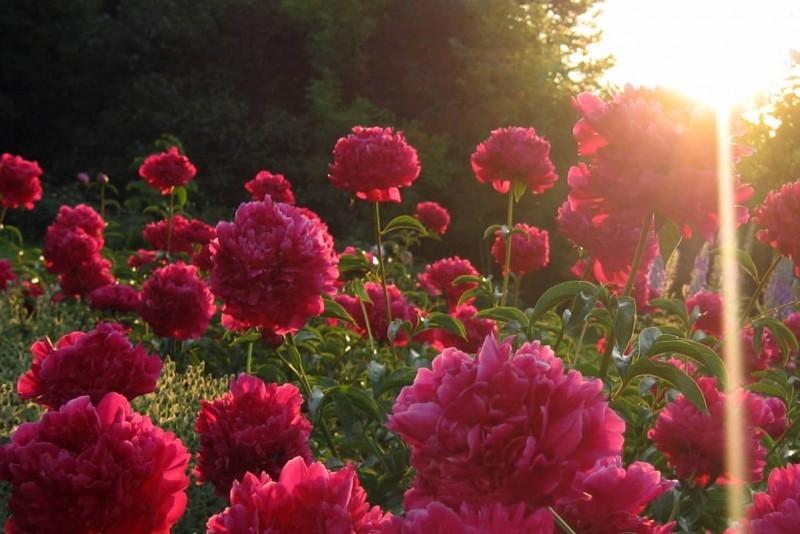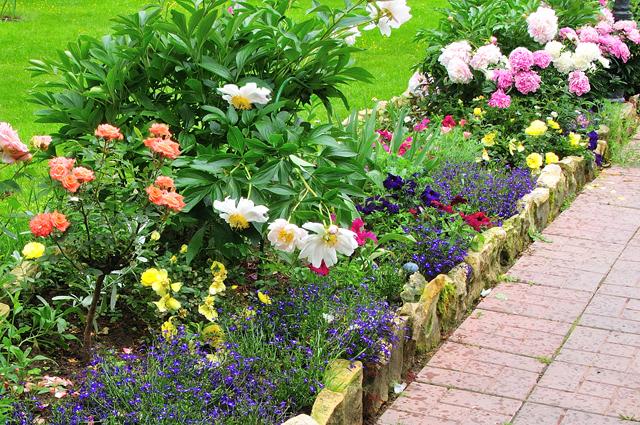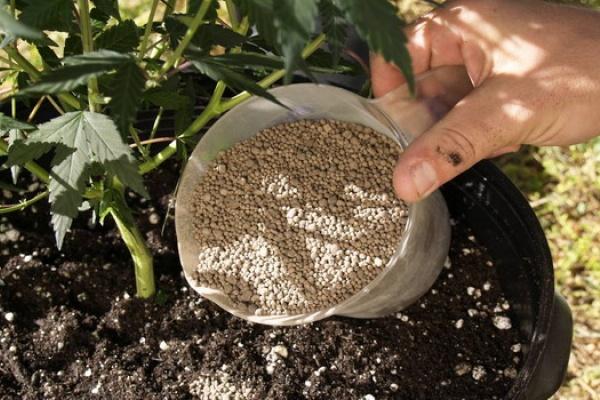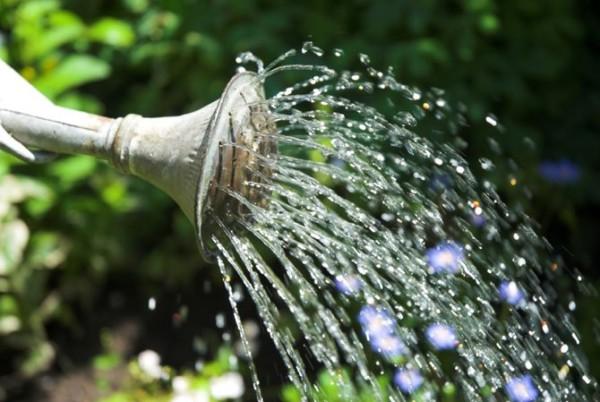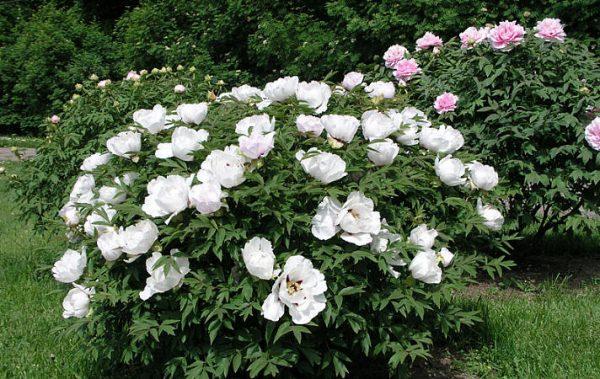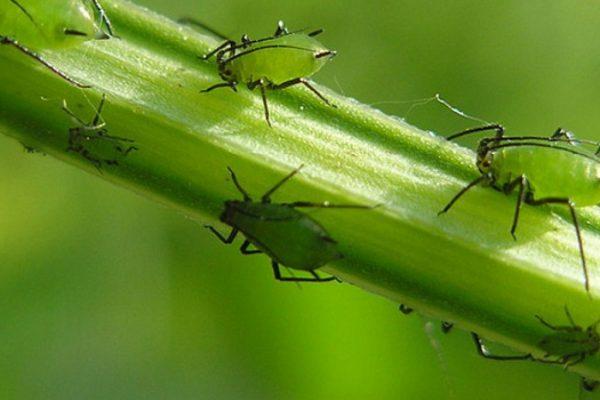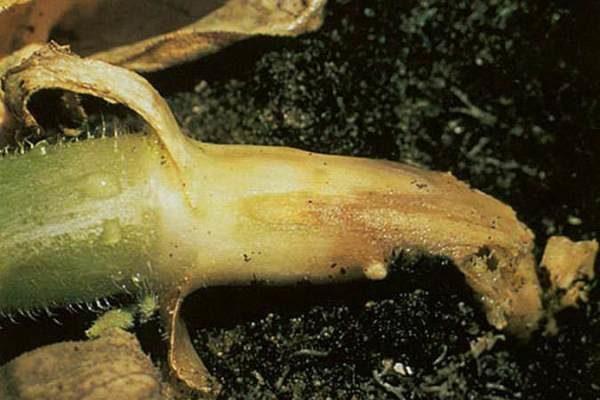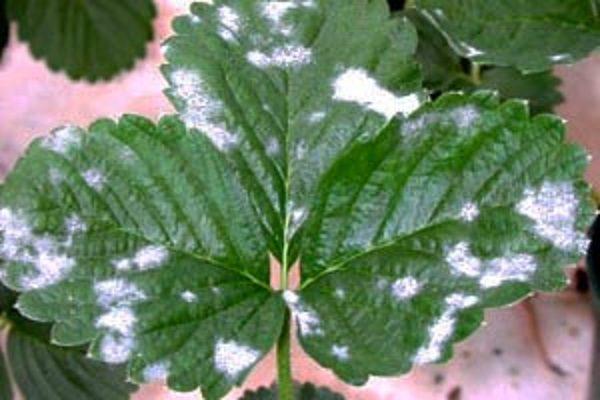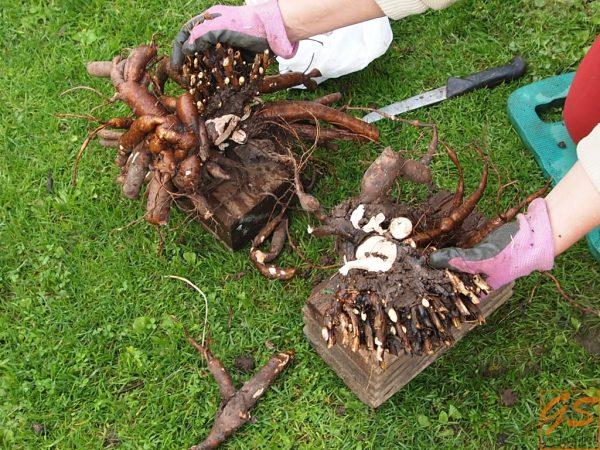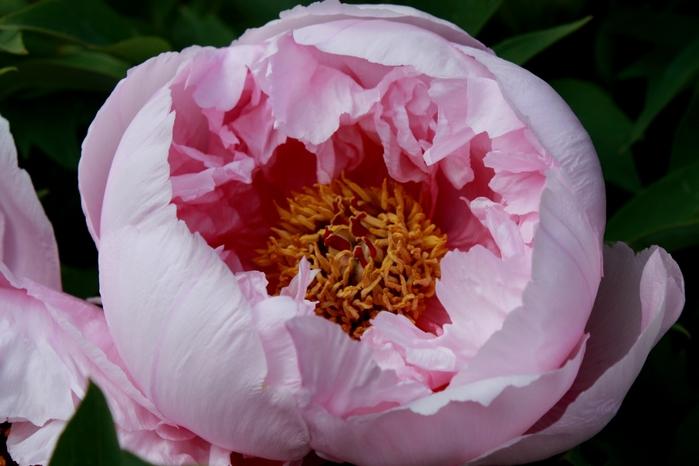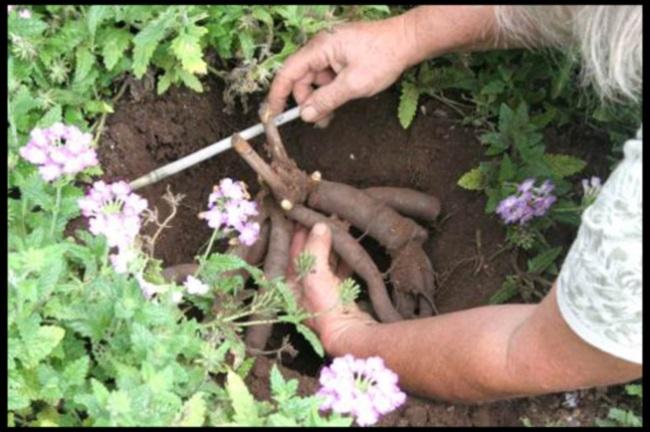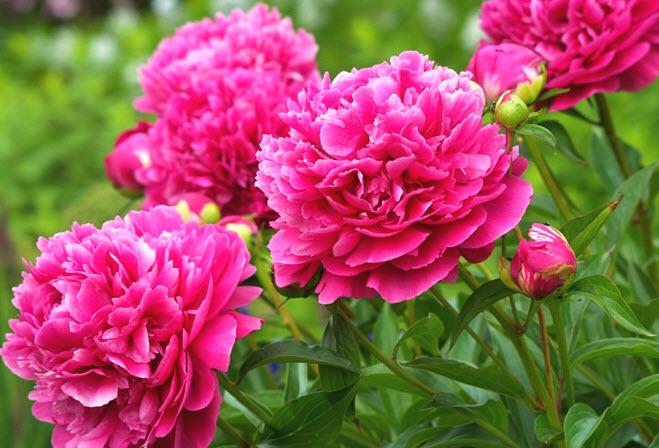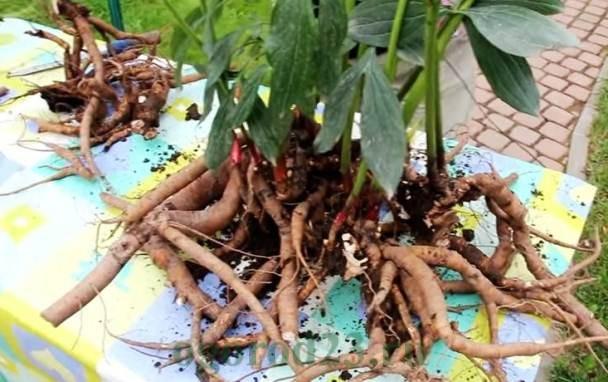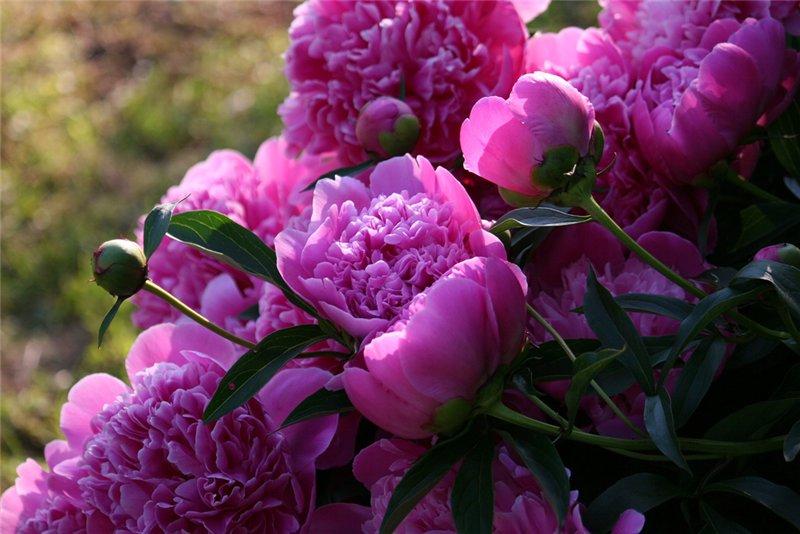Beautiful spring peonies have been decorating flower beds for a long time; planting and caring for this lush shrub requires certain skills. The plant prefers sunny areas and does not tolerate waterlogged soil. Withdrawn new varieties of peonies with a longer flowering period and do not require support. Peonies are usually grown for cutting, but they last only 4 days in water. It is better to leave the plant in the flowerbed and admire its exquisite appearance.
- Description and features
- How to plant in open ground
- Selecting a location
- Good lighting
- Moisture stagnation is not allowed
- Wind protection
- Soil requirements
- Deadlines
- Features of planting in spring
- What you need to know when planting in the fall
- How to choose planting material
- Bad Predecessors
- Planting scheme
- Care and cultivation
- Preventive spraying with fungicides
- Growth stimulants
- Top dressing
- Foliar
- Subroot
- Watering
- Loosening and weeding
- After flowering
- Transfer
- Diseases and pests
- Botrytis
- Gray mold
- Powdery mildew
- Preparing for winter
- Reproduction
- Dividing the bush
- Seed method
- Cuttings
- By layering
- How to plant tree peony in the garden
- Why doesn't it bloom or doesn't bloom well?
- Deep root planting
- Young plant
- The bush is too old
- Diseases
- Excessive pruning
- Problems with agricultural technology
- Secrets of growing in the country
- Removing faded buds
- How to cut correctly
- Compliance with watering and fertilizing regimes
- Circular support made of plastic and iron
- Use in landscape design
- Medicinal properties
Description and features
Peonies are hard to miss in a flower bed, because huge, bright, fragrant flowers are the main decoration of a flower garden. This rhizomatous plant grows in one place for several years and blooms in late spring. Its erect stems, 45-100 centimeters high, together with foliage, form a tall, lush bush.
The leaves are large, alternate, trifoliate or pinnate. Flowers are apical, solitary, large, 10-25 centimeters in diameter. They can be simple or terry. The color of the flowers is varied, from milky white to bright purple. The fruit is a multi-leafed plant with seeds inside.
Peony is a member of the Peony family. The plant got its name from a Greek myth. The healed Hades thanked his savior and did not let him die, turning him into an exquisite flower before his death.
How to plant in open ground
Peony is a perennial crop; it can grow in the same place for several decades. Before planting a flower, you need to choose a suitable place for it.
Selecting a location
A well-lit area is suitable for culture. The plant can be planted on a mound to allow water to drain away from the roots during rain.
Good lighting
Peony does not grow well in the shade of tall trees and shrubs. In a heavily shaded place, the plant may not bloom. The flowerbed should be illuminated by direct sunlight for at least 6 hours a day.
Moisture stagnation is not allowed
Peony is a resilient crop that can withstand frost or drought well. On its rhizome there are many dormant buds that awaken in the spring after winter, but in the water-filled soil they all rot, which is why the plant dies.
Wind protection
Peonies can be planted near a house or hedge (at a distance of one meter). In such places the bush will be protected from sudden gusts of wind.
Soil requirements
The peony bush does not like peat. It is not recommended for use as an additive, mulch or winter cover. Peat has an acidic reaction, and soil with neutral acidity is suitable for peony culture. Too acidic soil needs to be limed. For peony bushes, loam or sandy loam, well-drained, fertile soil is suitable. Soil composition: garden, leaf or turf soil, humus, sand, clay.
You can add a little ash, superphosphate and iron sulfate to the soil.
Deadlines
Peonies are usually planted in autumn (August-September). At this time, the bushes are dug up and divided. Gardeners who purchased planting material in the spring can plant peonies as early as April. The culture has two periods for the growth of suction roots - August-September or April-May. Peonies take root only in cool soil (at a temperature of 12 degrees Celsius).
Features of planting in spring
Peonies are usually planted before October. Purchased cuttings can be planted in the spring. Planting takes place at the very beginning of April.If the weather is very frosty, you can plant the division in a pot, put it in a cool place for the suction roots to grow, and in April-May transfer it to a flowerbed.
Peonies are replanted using the transshipment method. If you remove the plant from the pot, you will notice that the entire earthen lump is entangled in white suction roots. In order for the rhizome to grow normally and the peony to develop, you need to transplant the crop into a flower bed. Peonies planted in spring do not take root well.
It is best to plant the cuttings before the buds begin to grow. However, transplanting from a pot to a flowerbed together with a lump of earth is not too painful for the plant.
What you need to know when planting in the fall
It is recommended to plant peonies in August-September so that they have time to take root before frost. By August 15, this plant completes the formation of renewal buds (on the rhizome). New stems will grow from them in the spring. In the twenties, you can dig up a bush intended for propagation and divide its rhizome. Planting material (cuts) can be purchased ready-made. Before planting, the rhizome is placed in a Heteroauxin solution for a couple of hours (to stimulate root formation).
How to choose planting material
A beautiful, lushly blooming peony bush can only be grown from a young plant. It is better not to buy old bushes, because they can bloom several more times and then wither. It is best to purchase an annual or biennial plant grown in a special nursery. You can take a small section with 2-3 buds.
The root should be young, light, with large buds. You should not buy overdried cuttings with blackened and dried buds.
Bad Predecessors
It is better to plant peonies in the flowerbed after legumes or lupine.It is not advisable to plant flowers in the place where bushes or perennials used to grow. Such crops greatly deplete the soil, and it takes some time for it to recover.
Planting scheme
Delenki with buds are planted in dug holes. Preparatory planting work is carried out in advance. Two weeks before planting, prepare the soil, fertilize it with rotted humus, potassium, phosphorus, and dilute it with sand. Dig a hole measuring 50x50 centimeters. Pour fertilized soil onto the bottom, then add a little sand and immerse the section to a depth of 5 centimeters.
The most important thing when planting is to correctly set the distance from the top bud of the regeneration to the soil surface. It should be no more than 5 centimeters. You need to leave 1 meter of free space to the neighboring flower, since the peony bush grows greatly.
Care and cultivation
Peony bushes will grow for a long time and delight you with abundant flowering every spring if you care for them properly. After planting, they will bloom only two years later. Before flowering, you don’t need to fertilize the soil, but you need to constantly remove weeds from the flowerbed and break up the soil crust.
Preventive spraying with fungicides
In rainy and cool weather, peonies can get sick. Common diseases are gray rot, rust, brown spot. Fungal spores are destroyed with fungicides (copper oxychloride, colloidal sulfur, Bordeaux mixture, copper sulfate, Fundazol). The first treatment is carried out in early spring, when the shoots emerge. Water the plant itself and the ground near it.
The second and third time the already green foliage is sprayed with a fungicide solution. It is advisable to carry out the treatment before or after flowering. An interval of 10-11 days must be observed between sprayings. A bush requires 1 liter of solution (5 grams of the drug).
Growth stimulants
For active development, peonies need growth stimulants. In spring and autumn, after planting, the bushes are watered with a Heteroauxin solution. This drug stimulates root formation. To improve the development of stems and leaves, Zircon, Ferovit and Epin are used.
Top dressing
Peony bushes are fed as soon as shoots appear and before flowering. It is best to fertilize the plant with mullein solution. Fertilizer should be applied to circular holes near the bush. If there is no mullein, the peony can be fed with minerals by dissolving them in water. Even after flowering, until August, the bush needs to be fertilized with phosphorus and potassium.
Foliar
For young plants, it is better to use foliar feeding so that nutrients are absorbed through the leaves. The first is carried out at the moment the sprouts appear. Peony is fed with urea (5 grams per 1 liter of water). After 10 days, you can spray the plant again with this nitrogen fertilizer.
Subroot
In spring, peony bushes are watered with nitrogen-potassium fertilizers. For one bush you need 10 grams of ammonium nitrate and potassium sulfate dissolved in 3 liters of water. During the budding period, a third feeding is performed. For one bush you need to take 15 grams of potassium sulfate and superphosphate.
Watering
During drought, the plant needs to be additionally watered to the full depth of the roots (a bucket of water every 3-4 days). Peony bushes need watering at the time of bud formation, during flowering and at the end of summer, when flower buds are formed. Peonies are watered once every 2-3 days, 3-7 liters of water are poured under the bush.
Loosening and weeding
After watering, the soil around the bush can be loosened. Weeds that appear must be removed from the flowerbed so that they do not take away nutrients.
After flowering
Immediately after flowering, you need to cut the flower heads down to the first green leaf and remove them from the flowerbed. There is no need to touch the leaves. They should remain in the flowerbed until frost. After flowering, the formation and development of renewal buds (on the rhizome) takes place for 1.5 months. These will grow into flowering stems for the next season.
Transfer
People try not to replant peony bushes. They can grow in one place for 10 or more years. If there is a need for transplantation, it is carried out in early spring or autumn. During autumn transplantation, the entire above-ground part is cut off. The soil is moistened, after which the plant is dug up. Together with the earthen lump, the rhizome is transferred to a new place and immersed in a prepared hole.
Diseases and pests
In rainy and cool weather, crops can become infected with a fungal infection. Preventive spraying with fungicides (Fundazol, Bordeaux mixture, copper oxychloride) helps prevent diseases. Bushes are treated before and after flowering.
Peonies can be attacked by insects. Bronze beetles feed on leaves, root-knot nematodes attack roots, and sod ants eat flower petals. Preventive spraying with insecticides (Fitoverm, Aktellik, Karbofos) saves from pests.
Botrytis
The disease is caused by a fungus that lives in the soil. Gray mold appears on buds, leaves and stems in wet weather. Too acidic soil and excess nitrogen fertilizers can provoke the disease. For prevention, the soil is treated with lime, and the plants are sprayed with copper-containing preparations (copper sulfate, Bordeaux mixture) in early spring.
Gray mold
It affects stems, leaves, buds and rhizomes. Brown spots appear on the tips of the leaves, after which they dry out.The base of the stem becomes covered with a gray coating, the shoot darkens and breaks. Gray rot may appear on buds, which cause them to turn black and dry out. Preventive spraying with fungicides helps prevent fungus.
Powdery mildew
A fungal infection that attacks leaves in late summer. A white cobwebby coating appears on the upper side of the leaves. Spraying with a solution of copper sulfate or soda ash helps prevent powdery mildew.
Preparing for winter
Before winter, all stems should be cut to the surface of the ground. The above-ground part is cut off only after the first frost, when the stems have died down. Even after the peonies have faded, the foliage is left in the flowerbed, since until autumn there will be an outflow of nutrients from the leaves to the roots. Pruning too early can harm the plant. After pruning, the surface above the rhizome can be mulched with dry leaves or sawdust.
Reproduction
Peonies are most often propagated by division. rhizomes. The best time for breeding is April or the end of August.
Dividing the bush
Closer to autumn, a bush at the age of 3-4 years needs to be dug out of the ground. All stems and leaves are pre-cut. The rhizome is removed from the ground. It needs to be dried and then divided into sections. The root is cut with a knife. Each division should have at least 3-5 buds. The sections are sprinkled with crushed coal.
The delenka is kept in a cool room for a couple of days, and then planted in a permanent place. The rhizome can be pre-treated with a growth stimulator and fungicide. In the spring, you can rake the ground around the bush, cut off a piece of rhizome with a bud and plant it in a new place.
Seed method
This method is rarely used. Peonies grown from seeds will bloom only after 5 years.The seeds are collected at the end of August. At the beginning of September, they are sown in a garden bed and sprinkled with a 5-centimeter layer of soil. In the spring or a year later, the seeds germinate.
Cuttings
Peonies can be propagated from stem cuttings. In spring, the tops of shoots 10-12 centimeters long are cut off and placed in a jar with a Heteroauxin solution. After a week, they are planted in a moist sand-earth mixture and covered with a plastic bottle on top. The plant takes root for 3 weeks, after which it can be transferred to a flower bed.
By layering
Adult bushes aged 5-8 years can be propagated by layering. In summer, the shoots are pressed to the ground and covered with soil. You can make a small scratch on the stem. By autumn, the roots sprout, after which the cuttings are cut off from the mother bush and transplanted to a permanent place.
How to plant tree peony in the garden
Tree peony seedlings are usually purchased in February-March. At this time, planting material comes from European and Chinese gardening companies. It is better to store the purchased peony in a cool room until April, and then bury it in a hole in the flowerbed. If the buds have woken up and begun to grow, you need to plant the rhizome in a pot with substrate, put it in the window and water it regularly. By the end of May, the planted plant will have suction roots.
The awakened peony is transplanted to a permanent place when the air warms up to 15 degrees Celsius. However, the best time to tree peony planting - end of August, beginning of September.
Why doesn't it bloom or doesn't bloom well?
Gardeners sometimes encounter unexpected problems. Regularly caring for peonies, they wait for several years for flowering, which for some reason does not occur.It turns out that there are some nuances that you need to pay attention to.
Deep root planting
The peony will not bloom if the rhizome is deeply buried during planting. The ideal distance from the bud to the surface of the earth is 5 centimeters. If the root is placed a little deeper, the shoots will grow every year and add greenery, but will never bloom.
Young plant
Peonies usually bloom 2-3 years after planting. Late-flowering and red varieties can bloom only in the 4th year.
The bush is too old
It is not recommended to buy and plant mature bushes. The lifespan of peonies is limited, the old plant stops developing, and can be infected with a fungus or virus.
Diseases
Peonies do not bloom well during illness. Plants, if improperly cared for or in rainy weather, often suffer from gray rot. To prevent disease, peonies are sprayed with copper sulfate or Bordeaux mixture in early spring.
Excessive pruning
If you cut the flowers along with the leaves to the very base, the bush may not bloom the next year. Stems with flowers are cut to a third of their length. The leaves are left on the bush until frost.
Problems with agricultural technology
If peonies stop blooming in the spring, it means they lack nutrients. It is necessary to feed the plants with nitrogen, phosphorus and potassium or complex mineral fertilizers. Peony loves sunlight and moderate watering. If you plant it in the shade of tall plants and do not water it, it will not form buds and will not bloom.
Secrets of growing in the country
Peonies can be grown in your summer cottage. To do this, you need to buy a rhizome with buds and bury it shallowly in a flowerbed in August-September. The planted plant will bloom in 2-3 years. Peonies bloom at the end of May.Each flower blooms for 5-10 days, double varieties bloom longer (up to 15 days). On one bush there are several dozen buds, which bloom in turn. Peonies can bloom until mid-June.
Removing faded buds
Withered flowers and buds are immediately cut off without touching the leaves. If peonies are grown for cutting, then the pea-sized side buds are removed. Then the flowers remaining in the center will be more lush.
How to cut correctly
The first two years the buds are completely cut off. At this time, the rhizome is forming. In the third year, peonies can bloom. The flower is cut off in the morning by a third of the stem (40 centimeters), leaving more green leaves on the bush.
Compliance with watering and fertilizing regimes
Peonies love the sun and do not tolerate waterlogging. They require regular watering (5-10 liters per bush once every 3-4 days) and fertilization with urea, potassium sulfate and superphosphate. Fertilizing must be applied at least 2 times per season.
Circular support made of plastic and iron
Peonies with large flowers need support. It is made from plastic pipes or iron wire. Rings are installed around the bush, which lift the stems with flowers.
Use in landscape design
To decorate a personal plot and create beautiful compositions, new hybrids with small flowers, strong stems and long-lasting, abundant flowering are used. Popular park varieties: Karl Rosenfield, My Love, John Howard Widgel, Dutch Dwarf, Eaglet. Such bushes do not require support and fit perfectly into any composition. Peonies are used for mixborders and creating natural green corners.
Medicinal properties
Peony has medicinal properties. Plant roots are used for treatment. They are dug up in the fall and dried.Flower petals that are collected during flowering have medicinal properties.
Decoctions and tinctures of peony root are used for neurasthenia, metabolic disorders, and stomach diseases. A tincture of the petals is used to treat epilepsy, hemorrhoids and kidney stones.

